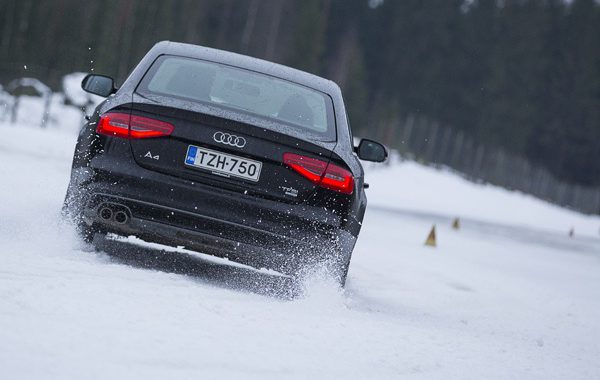Want to just ‘get in the car and go’ this winter—regardless of weather? Here’s how to do it
We got lucky with a mild winter last year. But we’ve lived in Chicago long enough to know not to bank on that two years in a row.
We also know this about winter: A poorly maintained vehicle can do just fine in 40-degree weather. But when the temperature plummets to 20 degrees or lower, it stresses everything in your car.
If there’s one part that’s not up to snuff, it means more wear and tear on the rest of the system. Ignore it for too long, and you’ll soon hear the ca-ching, ca-ching sound of your future repair bill climbing steadily.
If you’d rather skate through winter without a major repair bill, we recommend going on the offensive and scheduling a pre-winter check with us while the weather is still unseasonably warm.
Here’s what we’ll look at to make sure your car is ready for whatever Mother Nature sends our way:
1) Snow Tires: The key to keeping you moving
Our first bit of advice for winter: Invest in snow tires and a second set of wheels. We recommend snow tires without hesitation. They’re not just for snow, but also for ice. Modern snow tires are exceptional in icy conditions. Many of your German cars are available with all-wheel drive (AWD). If you have AWD and put snow tires on your car, you’ll practically be unstoppable. It doesn’t matter if the city plows your alley or not, you’ll be able to get in and out. (My Audi is lowered, and when I put my snow tires on, I drive anywhere all winter long. – Doug)
It will cost about $1,500 to buy a second set of wheels and tires, but if it prevents two accidents, they’re ostensibly free when you factor in the deductible on your insurance. (If you take into consideration, the headaches and hassles surrounding even a minor collision, we believe they pay for themselves in the first accident they prevent.)
Not to mention, when you’re driving on snow tires for 4 months of the year, that’s 4 months when you’re not wearing your main set of tires. That will buy you more time on those tires.
2) Brakes: Stop quickly and safely
If your brakes aren’t performing at 100 percent, your car can’t stop at 100 percent—no matter how many electronic aids you have. Stopping in adverse conditions with poorly maintained brakes is even more difficult because your ABS is depending on the system being 100 percent. Let’s inspect the braking system before you find yourself having to panic stop in a wicked snowstorm.
3) Wiper Blades: The oft-forgotten maintenance item
It’s easy to forget that our wiper blades are streaky and noisy until we’re in the middle of a rain or snow storm. Unless they’ve been replaced in the last 6 months, let’s get some new wiper blades on the car.
4) Coolant: Don’t let it turn into a roadside emergency
This is also a big deal. When it gets cold and your cooling system isn’t up to par, you’re going to have problems. Before winter, let us check the level of the coolant, the quality of the coolant (it doesn’t last forever!) and the integrity of the system. A little leak at 40 degrees becomes a major leak at 20 degrees. Remember, the Germans are big on their plastic cooling parts, and plastic parts don’t last forever.
5) Suspension: All work and no ‘play’
We’ll make sure there are no loose components in your shocks, struts, tie-rod ends, ball joints, etc. This is important because your tires wear out faster if there’s “play” anywhere in the suspension system. This is especially true in Audis with the four-link suspension system in the front and the five-link suspension in the rear. As we know, tires are not cheap. Let’s do what we can to keep the suspension from eating up the tread.
It comes down to this: When you know your car is mechanically safe and equipped with snow tires, you can confidently get in your car and go to Grandma’s for Thanksgiving or Christmas dinner. You have a sense of security that you wouldn’t have otherwise. You don’t have to think twice about it. You just get in your car and go.

